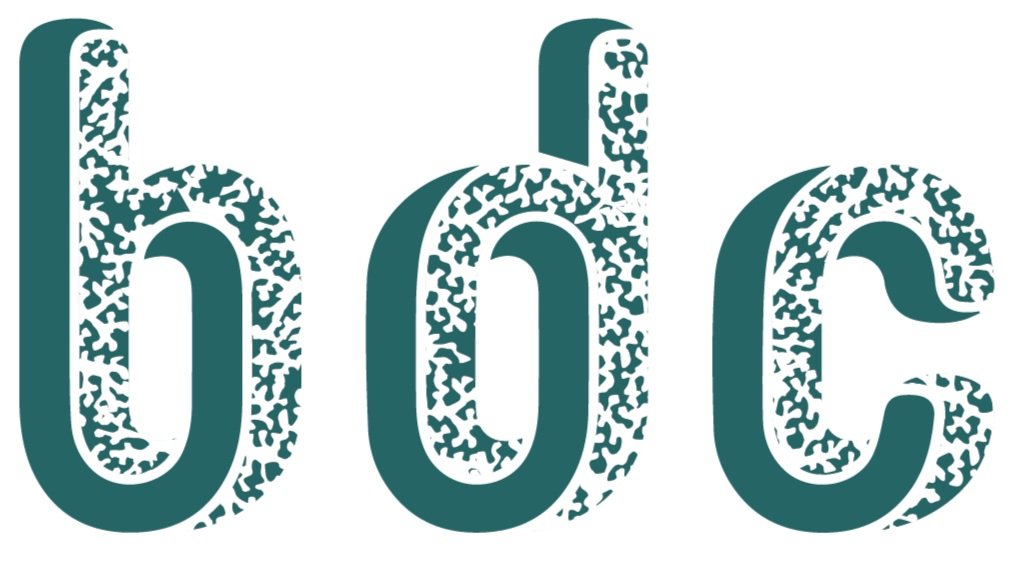Climate Chronicles, BDC 2023, Auburn University
Alumni Voices Interview By Afifa Ibnat
This edition of Alumni Voices features Climate Chronicles, an innovative project by talented graphic design students from Auburn University who participated in Biodesign Challenge 2023. The team consists of Erika Donley, Grace Lovell, Alyssa Johnson, and Zach Smith, each bringing unique perspectives and experiences to the project. We had the privilege of speaking with Erika, Grace, and Alyssa, who shared insights into their journey and the inspiration behind their impactful work.
Initially, all three students on Climate Chronicles had different academic plans before discovering their passion for biodesign. Erika came to Auburn to study Exercise Science and Kinesiology, but her love for creativity led her to switch to the graphic design program after her freshman year. Alyssa, intended to pursue Marine Biology but decided to follow her passion for art and illustration through Auburn’s graphic design program. Grace began her studies in Biomedical Sciences but found her true calling in graphic design, complemented by a minor in business. Their introduction to biodesign came through their Interactive Media course, where Professor Devon Ward inspired them with the world of bioart and biodesign, steering their academic and professional trajectories toward this innovative field.
Can you describe your project Climate Chronicles? What were sources of inspiration that led you to your project idea?
Climate Chronicles is a project that utilizes innovative bioprinting techniques involving yeast, akin to screen printing, to create a triptych of posters depicting the past, present, and future impacts of climate change. We explored how the past beauty of the sublime, as captured by romanticism paintings, have been corrupted by humans as we face the effects of climate change.
We drew inspiration from our personal feelings and survey results regarding climate change, as well as from Finnish visual artist Johanna Rotko's Yeastograms, which involve creating portraits in petri dishes from baker's yeast. We incorporated Caspar David Friedrich's painting, "The Monk by the Sea," to represent the past, a photograph of the 2021 wildfires in Greece for the present, and speculative AI-generated images for the future, emphasizing the urgent need for action to mitigate environmental damage.
What message or emotions do you hope viewers take away from experiencing the triptych?
Through our triptych, we hope to evoke deep reflection and a sense of responsibility in viewers regarding climate change.
Erika:
We invite viewers to consider their personal experiences with nature and their understanding of climate change, highlighting survey findings that many people feel uncertain or fearful about the worsening effects.
Grace:
We aim for viewers to leave with a heightened awareness of their actions' impact on the planet, hoping to inspire a sense of urgency and a commitment to reducing harmful behaviors such as pollution and the use of single-use plastics.
Did your experience with BDC inform the way you design today? Or did you have any “discovery” moments while going through Biodesign Challenge?
Biodesign Challenge influenced the design approaches and inspirations of Grace, Erika, and Alyssa, shaping not only their project but also their future paths in design and beyond.
Grace
My experience with the Biodesign Challenge made me fall in love with the iterative design process. I loved being able to create images from living materials as opposed to ink and paper. I learned about the power of functioning as a team and delegating work according to the various strengths and weaknesses within the team and encouraging each other to produce something that we would be proud to present.
Erika's experience in BDC served as a catalyst for honing her skills in visual storytelling and communication.
My interest in blending my understanding of design and my ability to synthesize complicated information in a visually compelling way allowed us to communicate our process and narrative.
Meanwhile, inspired by the transformative potential of art to shape the environment, Alyssa's experience in Biodesign Challenge ignited a passion for exploring the intersection of creativity and sustainability.
This past semester as I continued my work in biodesign, I was inspired by artists like Robert Smithson, Nancy Holt, and Michael Heizer. I find art that is made by shaping the land itself and uses natural materials is fascinating and something I’d like to continue to pursue in the future.
Her exploration of biodesign opened doors to a world of artistic inspiration, leading her to draw from the works of pioneering artists like Robert Smithson, Nancy Holt, and Michael Heizer. Immersed in the realm of land art, she was captivated by the seamless integration of natural materials and landscapes, finding resonance with her own aspirations in biodesign.
Do you have any advice for future BDC students or teams?
Erika:
Come into the experience with an open mind. I felt at first that we were totally out of our league but it's important to know that everyone worked hard to get there. You are just as deserving of the opportunity as any other school/team. When it comes to the presentations, it seems more nerve-wracking, but if you prepare and do your research, you will do above and beyond your expectations
Grace:
I would advise budding designers competing in BDC to get to know the other teams. It was extremely valuable and exciting to get to know the other students from around the country and the world! It made it more personal as we got to watch their presentations and support the work that they were doing. On a more practical note, I would recommend practicing your presentation an absurd amount so that you are able to do it without notecards and focus on maintaining eye contact as you communicate about your work and research.



